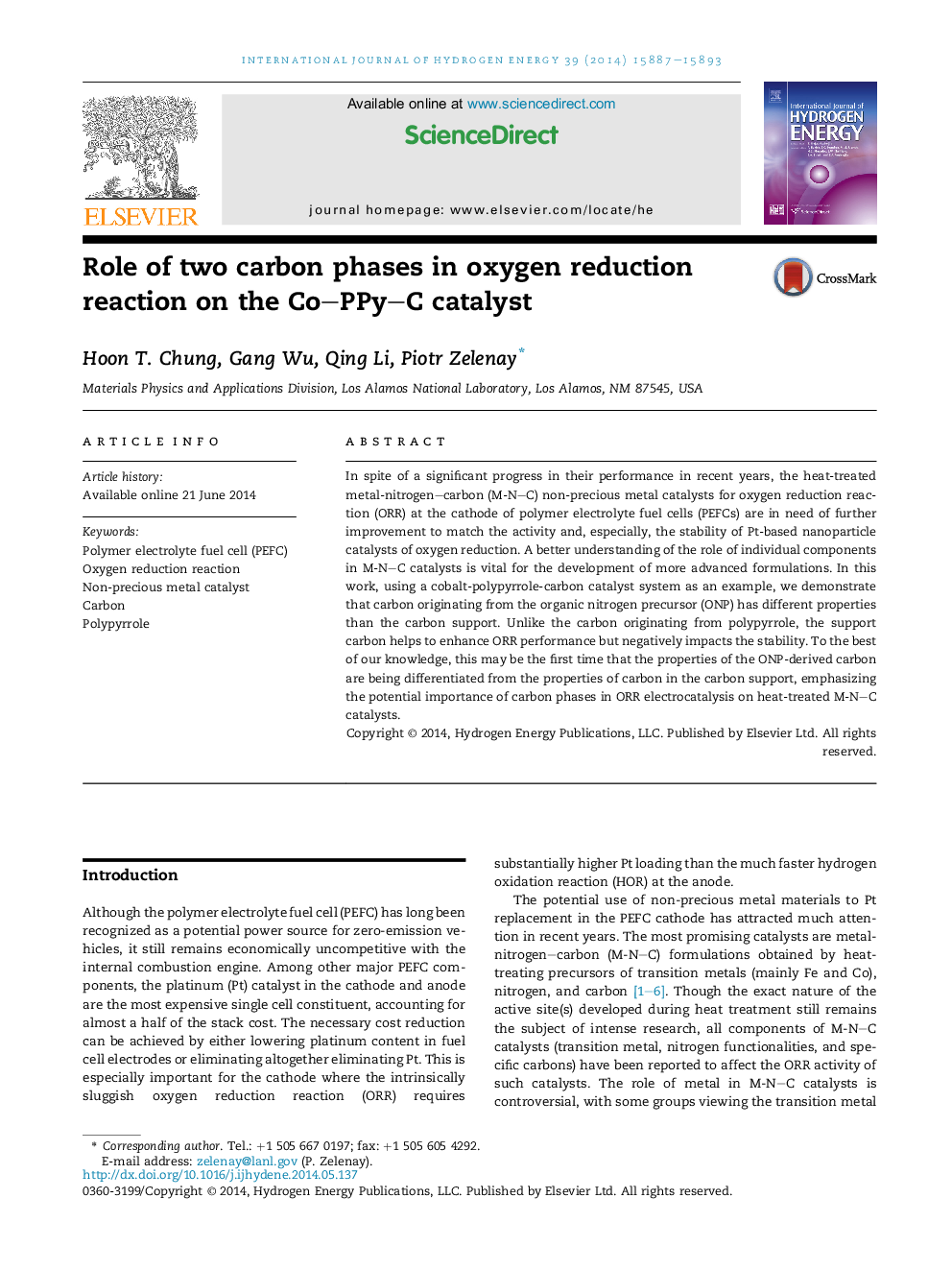| کد مقاله | کد نشریه | سال انتشار | مقاله انگلیسی | نسخه تمام متن |
|---|---|---|---|---|
| 1272432 | 1497481 | 2014 | 7 صفحه PDF | دانلود رایگان |

.
• We explore the effect of carbon from organic nitrogen precursor (C-ONP) on ORR activity.
• C-ONPs exhibit lower ORR performance but better stability than using a carbon support.
• The importance of C-ONP in ORR electrocatalysis is experimentally demonstrated.
In spite of a significant progress in their performance in recent years, the heat-treated metal-nitrogen–carbon (M-N–C) non-precious metal catalysts for oxygen reduction reaction (ORR) at the cathode of polymer electrolyte fuel cells (PEFCs) are in need of further improvement to match the activity and, especially, the stability of Pt-based nanoparticle catalysts of oxygen reduction. A better understanding of the role of individual components in M-N–C catalysts is vital for the development of more advanced formulations. In this work, using a cobalt-polypyrrole-carbon catalyst system as an example, we demonstrate that carbon originating from the organic nitrogen precursor (ONP) has different properties than the carbon support. Unlike the carbon originating from polypyrrole, the support carbon helps to enhance ORR performance but negatively impacts the stability. To the best of our knowledge, this may be the first time that the properties of the ONP-derived carbon are being differentiated from the properties of carbon in the carbon support, emphasizing the potential importance of carbon phases in ORR electrocatalysis on heat-treated M-N–C catalysts.
Figure optionsDownload as PowerPoint slide
Journal: International Journal of Hydrogen Energy - Volume 39, Issue 28, 23 September 2014, Pages 15887–15893